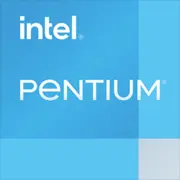Intel Pentium G2140

Intel Pentium G2140: Übersicht und Relevanz im Jahr 2025
Architektur, Kompatibilität und Anwendungszenarien des Budget-Prozessors
1. Hauptmerkmale: Architektur und Leistung
Der Intel Pentium G2140, der 2013 auf den Markt kam, gehört zur Ivy Bridge-Reihe (3. Generation Intel Core). Trotz seines Alters bleibt er aufgrund des niedrigen Energieverbrauchs und der einfachen Integration in alte Systeme nach wie vor beliebt.
Architektur und Fertigungstechnik
- Codename: Ivy Bridge (22 nm).
- Kerntypen/Threads: 2/2 (ohne Hyper-Threading-Unterstützung).
- Basistaktrate: 3,3 GHz (kein Turbo Boost).
- Cache: 3 MB L3.
- TDP: 55 W.
Leistung
Laut Geekbench 6 (2025):
- Single-Core: 551 Punkte.
- Multi-Core: 917 Punkte.
Zum Vergleich: Der aktuelle Pentium Gold G7505 (2024) erreicht ca. 1200/2400 Punkte. Der G2140 eignet sich für grundlegende Aufgaben, fällt jedoch in Mehrkernanwendungen zurück.
Hauptmerkmale
- Unterstützung für SSE4.2- und AVX-Befehle.
- Integrierte Intel HD-Grafik (nicht für Spiele geeignet).
- Niedrige Wärmeabgabe — geeignet für kompakte PCs.
2. Kompatible Motherboards
Sockel: LGA 1155.
Chipsets: H61, B75, H77, Z75, Z77.
Besonderheiten bei der Auswahl
- Neue Boards: Seit 2015 nicht mehr produziert. Im Jahr 2025 sind nur gebrauchte Optionen verfügbar (Preis: 20–50 $).
- Empfehlungen:
- Für Bürotasks — H61 (minimaler Preis).
- Für Overclocking (sofern der Prozessor entsperrt ist) — Z77.
- Überprüfen Sie die Verfügbarkeit von USB 3.0 (vorhanden in B75/H77/Z77).
Beispiel: ASUS P8B75-M LX Plus (gebraucht) — zuverlässige Option für 30 $.
3. Unterstützter Speicher
Speichertyp: DDR3-1333/1600 MHz.
Maximaler Speicher: 32 GB (abhängig vom Motherboard).
Einschränkungen:
- Keine Unterstützung für DDR4/DDR5 — das ist für moderne Anwendungen kritisch.
- Es wird empfohlen, zwei Module für den Dual-Channel-Modus zu verwenden (z. B. 2x4 GB DDR3-1600).
Tipp: Wenn Sie ein System von Grund auf neu zusammenstellen, suchen Sie nach Boards mit 4 DDR3-Slots.
4. Empfehlungen für Netzteile
Bei einem TDP von 55 W ist selbst ein bescheidenes Netzteil ausreichend, aber es ist wichtig, andere Komponenten zu berücksichtigen:
- Ohne dedizierte Grafikkarte: 300 W sind ausreichend (z. B. be quiet! SFX Power 3, 45 $).
- Mit einer Grafikkarte der Klasse NVIDIA GT 1030: Wählen Sie ein Netzteil mit 400–450 W (Corsair CX450, 55 $).
Wichtig: Sparen Sie nicht am Netzteil. Günstige Modelle (<30 $) können Komponenten beschädigen.
5. Vor- und Nachteile des Pentium G2140
Vorteile:
- Energieeffizienz: Ideal für schwachbrüstige Builds.
- Preis: Gebrauchte Prozessoren kosten 10–20 $.
- Kompatibilität: Ersatzteile sind auf dem Sekundärmarkt leicht zu finden.
Nachteile:
- Veraltete Architektur: Keine Unterstützung für DirectX 12, PCIe 3.0.
- Begrenzte Multitasking-Fähigkeiten: 2 Kerne schaffen Rendering oder Streaming nicht.
- DDR3: 30–50 % langsamer als DDR4/DDR5.
6. Anwendungszenarien
Büro und Web-Browsing
- Arbeiten mit Dokumenten, E-Mails, Zoom.
- Beispiel: System mit G2140 + 8 GB DDR3 + 240 GB SSD startet Windows 10 in 15 Sekunden.
Multimedia
- Wiedergabe von Full HD-Videos über VLC oder Kodi.
- Problem: 4K wird von der integrierten Grafik nicht unterstützt.
Leichte Spiele
- Minecraft (40–60 FPS mit niedrigen Einstellungen).
- CS:GO (30–40 FPS bei 720p).
Was zu vermeiden ist:
- Videobearbeitung, 3D-Modellierung, moderne Spiele (Cyberpunk 2077, Elden Ring).
7. Vergleich mit Wettbewerbern
1. Intel Pentium Gold G7505 (2024):
- 2 Kerne/4 Threads, DDR4-3200.
- Geekbench 6: 1200/2400.
- Preis: 75 $ (neu).
2. AMD Athlon 3000G (2025):
- 2 Kerne/4 Threads, Vega 3 GPU.
- Unterstützung für DDR4.
- Preis: 60 $ (neu).
Fazit: Der G2140 verliert an Leistung, gewinnt aber im Preis auf dem Sekundärmarkt.
8. Praktische Tipps zur Zusammenstellung
1. Wahl der SSD: Kingston A400 240 GB (25 $) beschleunigt das System.
2. Kühlung: Der Standardkühler reicht aus, aber für einen leisen Betrieb sollten Sie den Deepcool GAMMAXX 200T (15 $) wählen.
3. Upgrade: Fügen Sie eine GTX 1650 (gebraucht, 80 $) für Spiele hinzu.
4. OS: Verwenden Sie Linux (Lubuntu) oder Windows 10 LTSC zur Ressourcenschonung.
Beispielzusammenstellung:
- Prozessor: G2140 (15 $ gebraucht).
- Motherboard: ASUS P8H61-M (25 $ gebraucht).
- Speicher: 8 GB DDR3 (20 $ gebraucht).
- Speichergerät: SSD 240 GB (25 $).
- Netzteil: 450 W (55 $).
- Insgesamt: ca. 140 $ (ohne Grafikkarte).
9. Fazit: Für wen eignet sich der Pentium G2140?
Dieser Prozessor ist die Wahl für:
- Enthusiasten mit begrenztem Budget, die PCs aus gebrauchten Komponenten zusammenstellen.
- Bürosysteme, wo der minimale Preis wichtig ist.
- Medienzentren zur Wiedergabe von Full HD-Inhalten.
Warum sollte man ihn 2025 nicht kaufen?
- Moderne Pentium Gold und Athlon bieten doppelt so viel Leistung für 60–80 $.
- Das Fehlen von Unterstützung für DDR4 und neue Schnittstellen (USB 3.2, NVMe) macht ihn archaisch.
Schlussfolgerung: Der G2140 ist eine vorübergehende Lösung für spezifische Aufgaben. Für langfristige Nutzung ist es besser, eine neue Budget-CPU zu wählen.
Basic
CPU-Spezifikationen
Speicherspezifikationen
GPU-Spezifikationen
Verschiedenes
Benchmarks
Im Vergleich zu anderen CPUs
In sozialen Medien teilen
Oder verlinken Sie uns
<a href="https://cputronic.com/de/cpu/intel-pentium-g2140" target="_blank">Intel Pentium G2140</a>